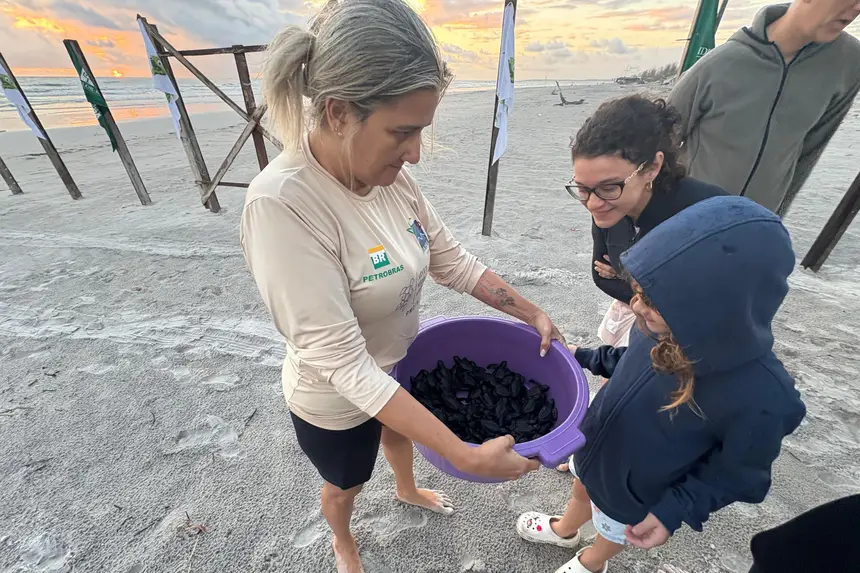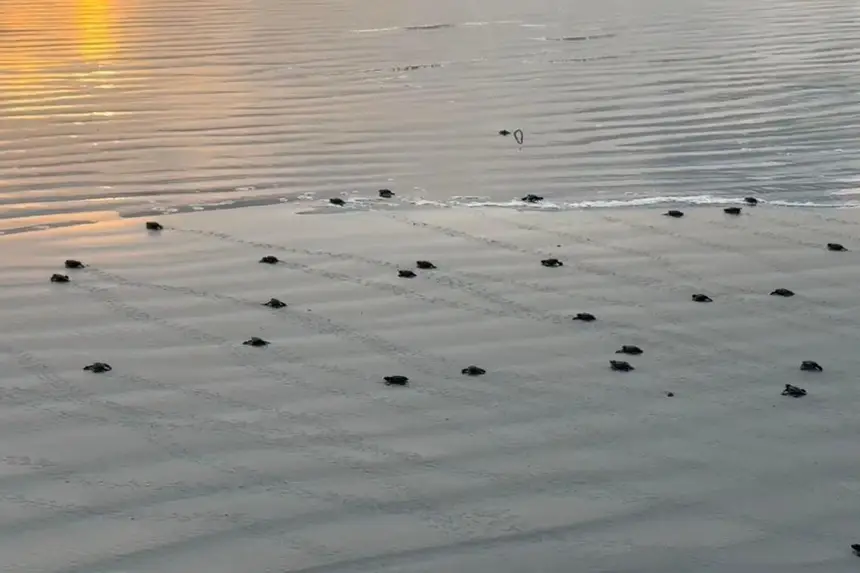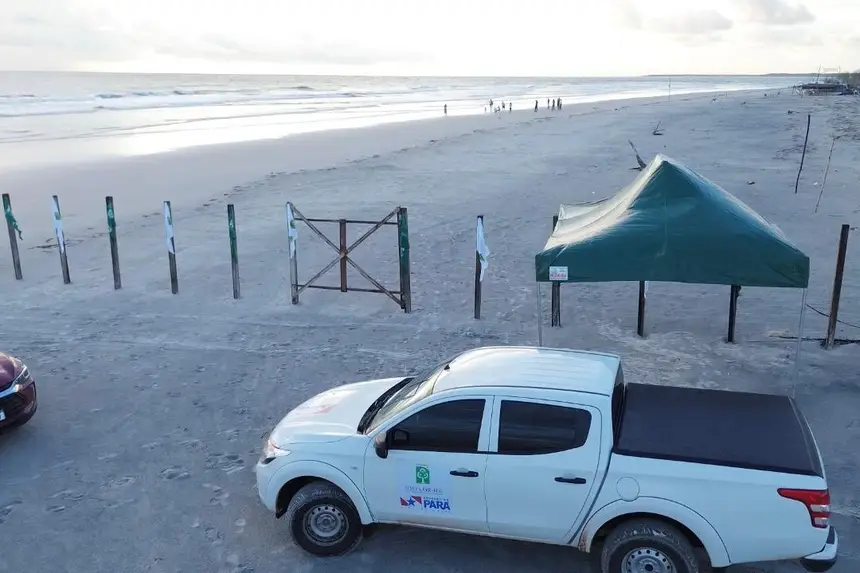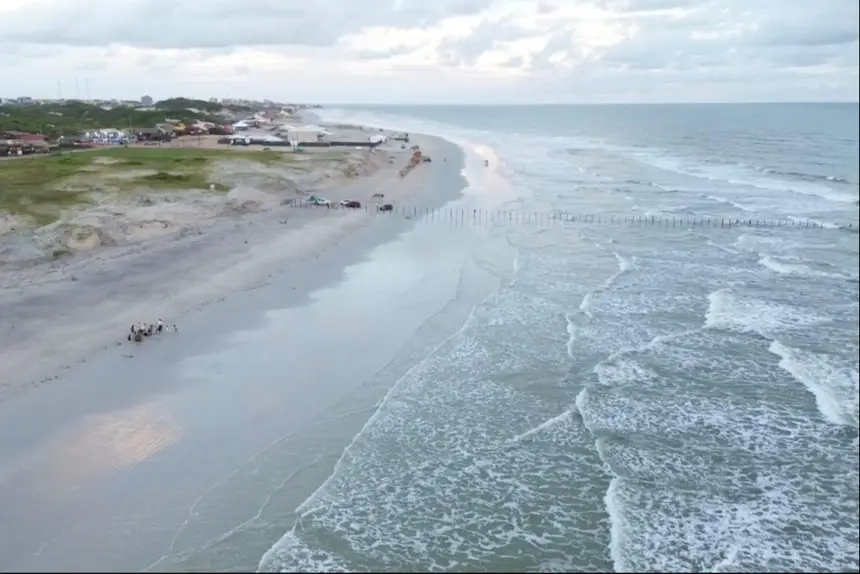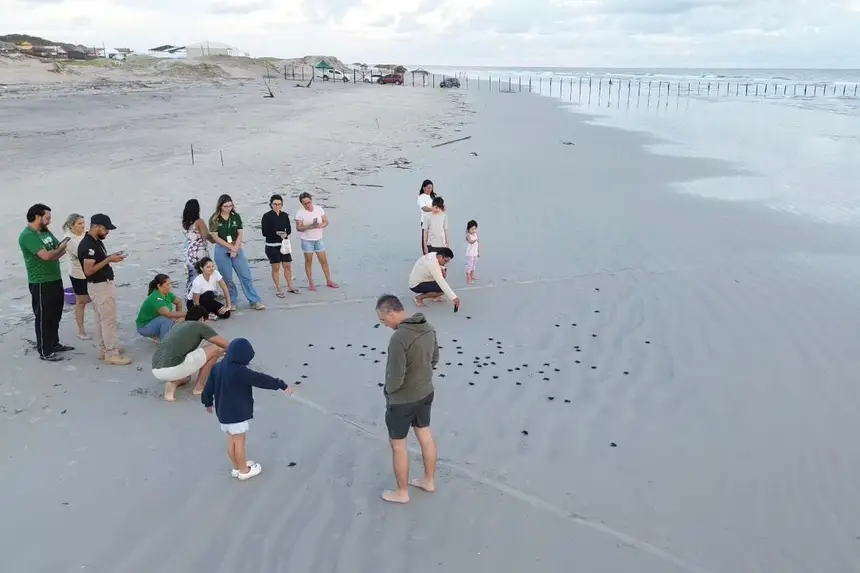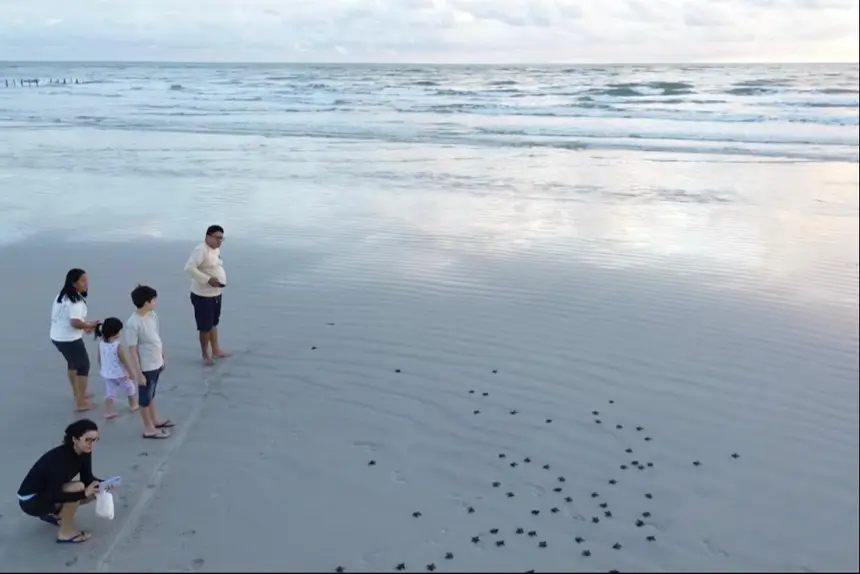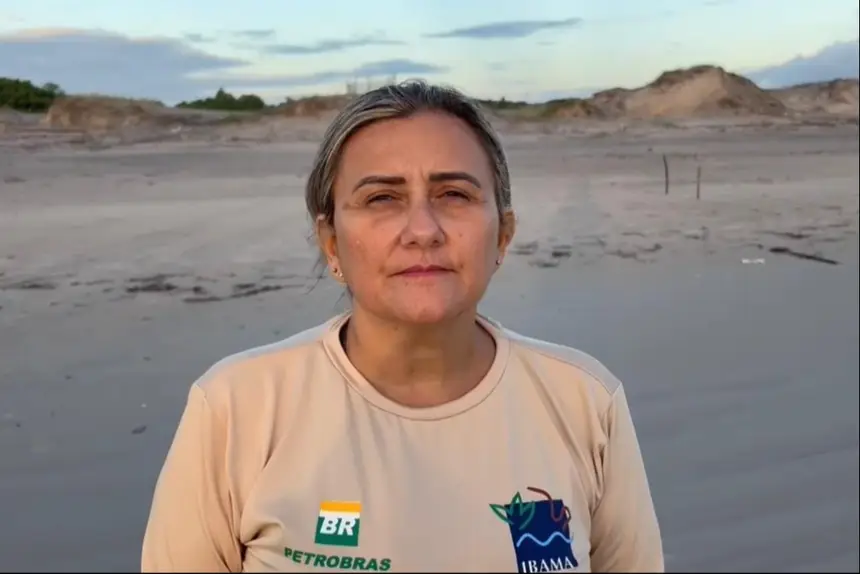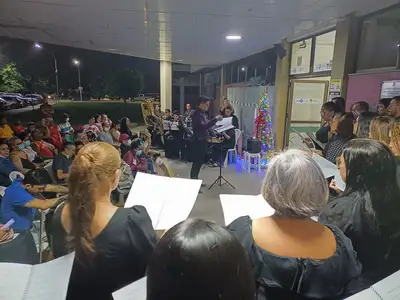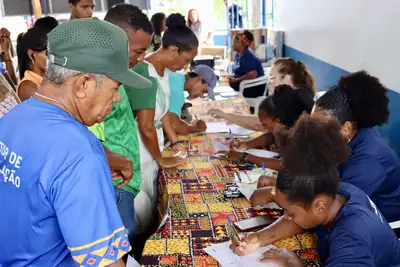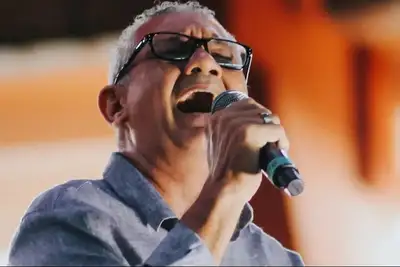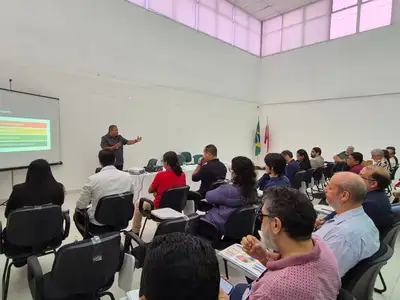Release of olive ridley turtle hatchlings reinforces preservation at Atalaia Beach
Ideflor-Bio monitors and encourages the initiative, which takes place near the Conservation Unit (UC) Natural Monument of Atalaia, managed by the Institute
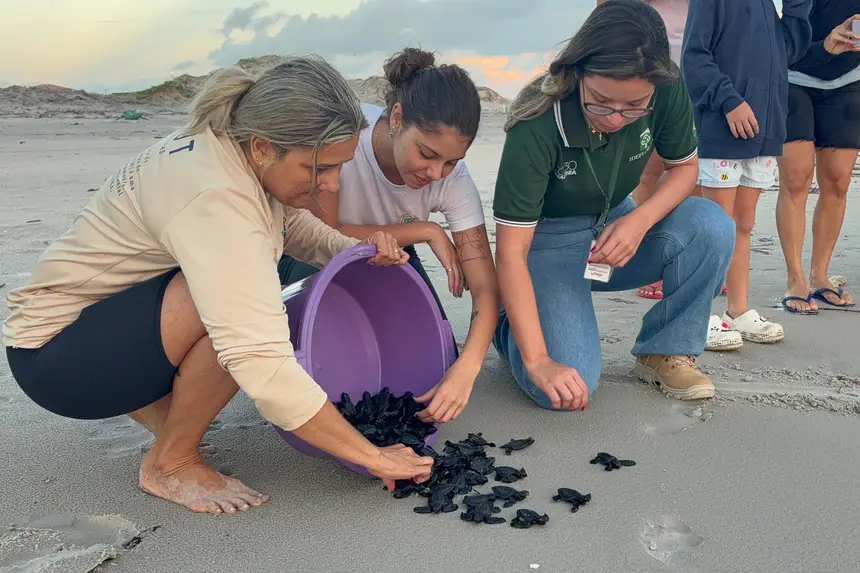
A silent and powerful spectacle of nature drew attention at Atalaia Beach, in Salinópolis, northeastern Pará, on the morning of this Tuesday (8): the release of 70 olive ridley turtle (Lepidochelys olivacea) hatchlings. The initiative is part of the Sea Turtle Nesting Monitoring Project (PMDTM), a control and monitoring measure required by federal environmental licensing, conducted by the Brazilian Institute of Environment and Renewable Natural Resources (Ibama).
In Pará, the project is executed by the Association for the Conservation and Sustainable Use of Natural Resources in Wet Environments of the Amazon (ARVUT), in partnership with the Bicho D’Água Institute. The Institute of Forest Development and Biodiversity of the State of Pará (Ideflor-Bio) closely monitors the initiative, especially since it occurs in the vicinity of the Conservation Unit (UC) Natural Monument of Atalaia, managed by the agency.
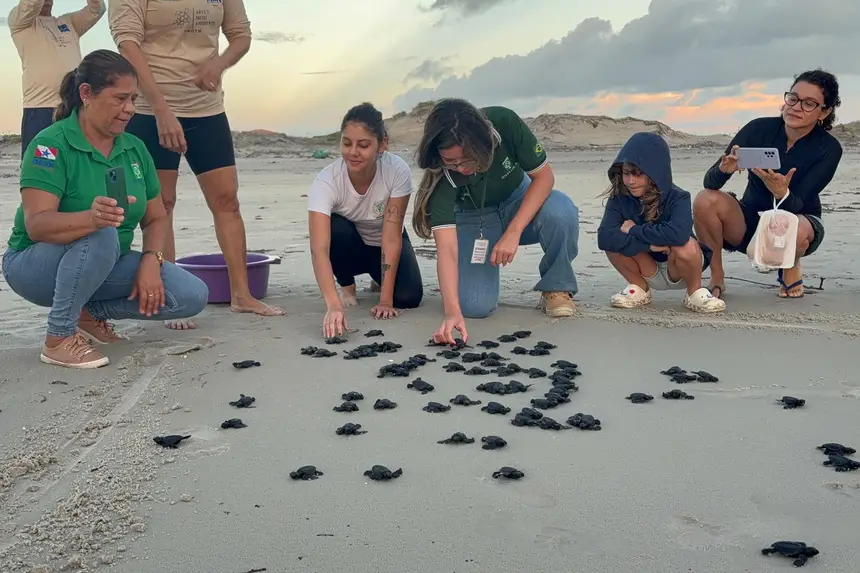
The project coordinator in the region, biologist Josie Figueiredo, explains that the moment of release is determined exclusively by the timing of nature. "Sea turtles, unlike river species, need to be released immediately after the eggs hatch. Therefore, it is not possible to schedule ceremonies or actions at a set time. Our focus is to ensure that these hatchlings safely reach the sea, following their natural instinct,” she detailed.
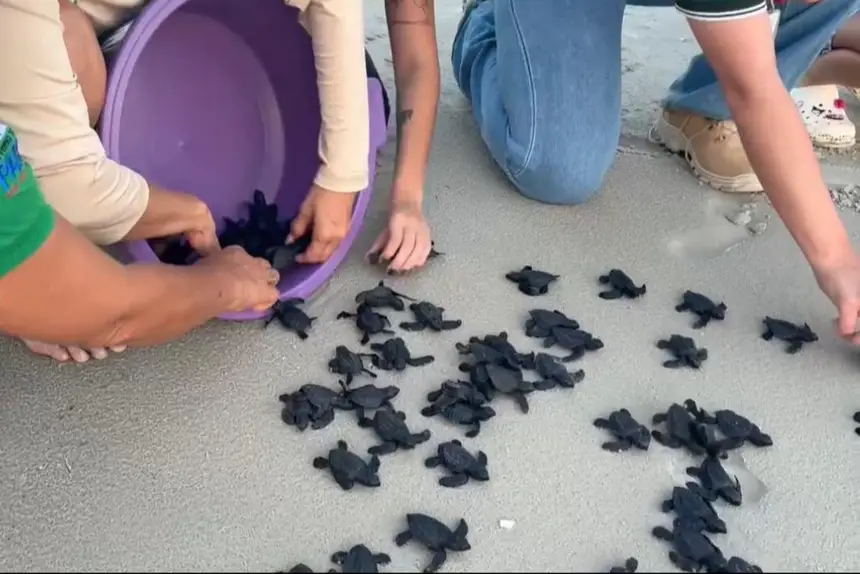
Awareness - The work carried out goes beyond monitoring the nests. The team also promotes educational actions with bathers and residents of the region, alerting them about the importance of conserving sea turtles – all classified as endangered species. The release this Tuesday represents another milestone in the ongoing effort to protect the species.
The Natural Monument of Atalaia has a protected area of 256.58 hectares and houses sensitive and vital coastal ecosystems, such as dunes, restinga, mangroves, and lakes. The presence of species like the olive ridley turtle is a direct indicator of the environmental quality of the region and reinforces the importance of conserving these protected areas.
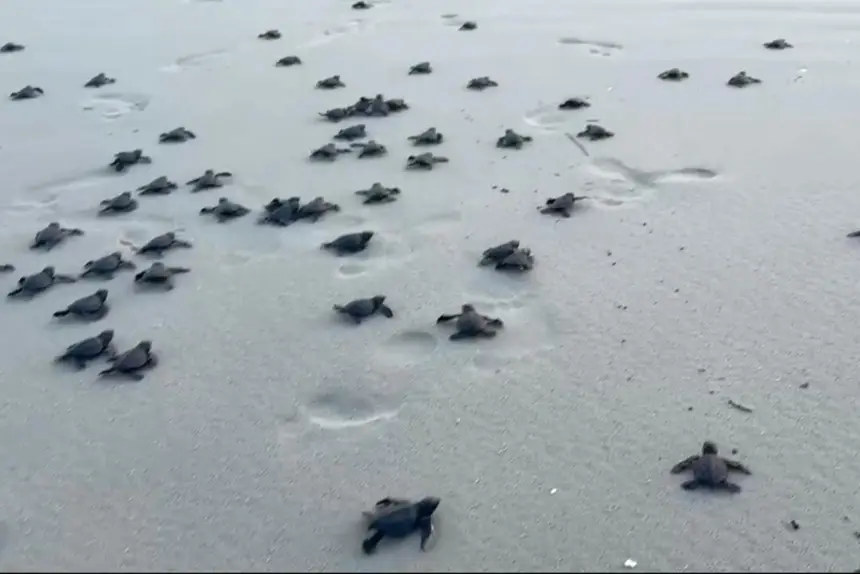
Safeguard - For the president of Ideflor-Bio, Nilson Pinto, the action is an example of how joint work can yield positive results. “Our role is to ensure the integrity of the UCs, but actions like this only happen thanks to the dedication of partner institutions that work on the front lines of marine fauna protection. The State recognizes and values the leadership of ARVUT and the Bicho D’Água Institute in this process,” he stated.
The release of the hatchlings also raises public awareness about the importance of respecting the cycles of nature. Many tourists and residents who witnessed the scene were moved to see the small animals making their way to the sea, in one of the most fragile and emblematic moments of their lives.
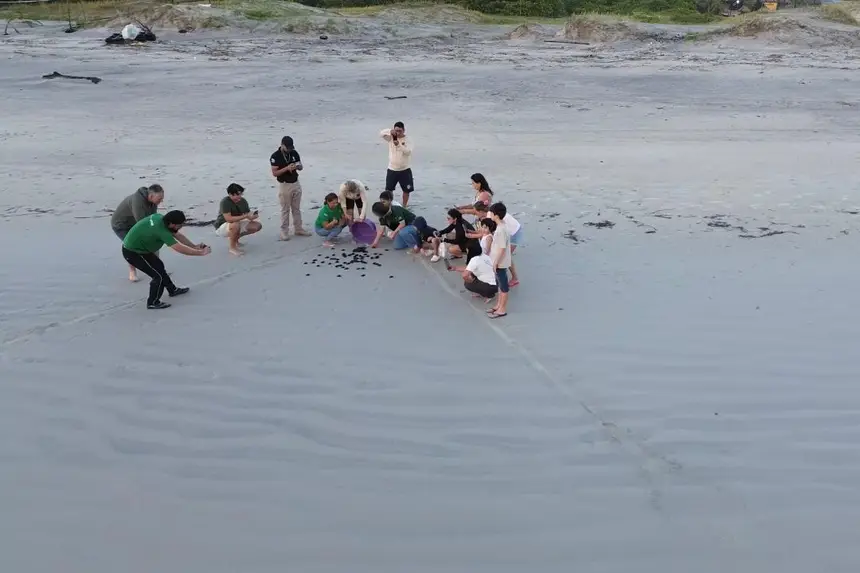
In this breeding season, there are still two monitored nurseries waiting for the eggs to hatch. The teams continue in the field, ensuring that each new birth is accompanied with technical rigor, safety, and respect for life. The expectation is that soon, new groups of hatchlings will begin their journey in the ocean.
Nilson Pinto also stated that the preservation of sea turtles is a collective responsibility. “The release of the 70 hatchlings at Atalaia Beach is a symbol of the strength of this cooperation, in a continuous effort to protect not only one species but the entire ecological balance of the Pará coast,” concluded the president of Ideflor-Bio.
Text by Pablo Allves / Ascom Ideflor-Bio


